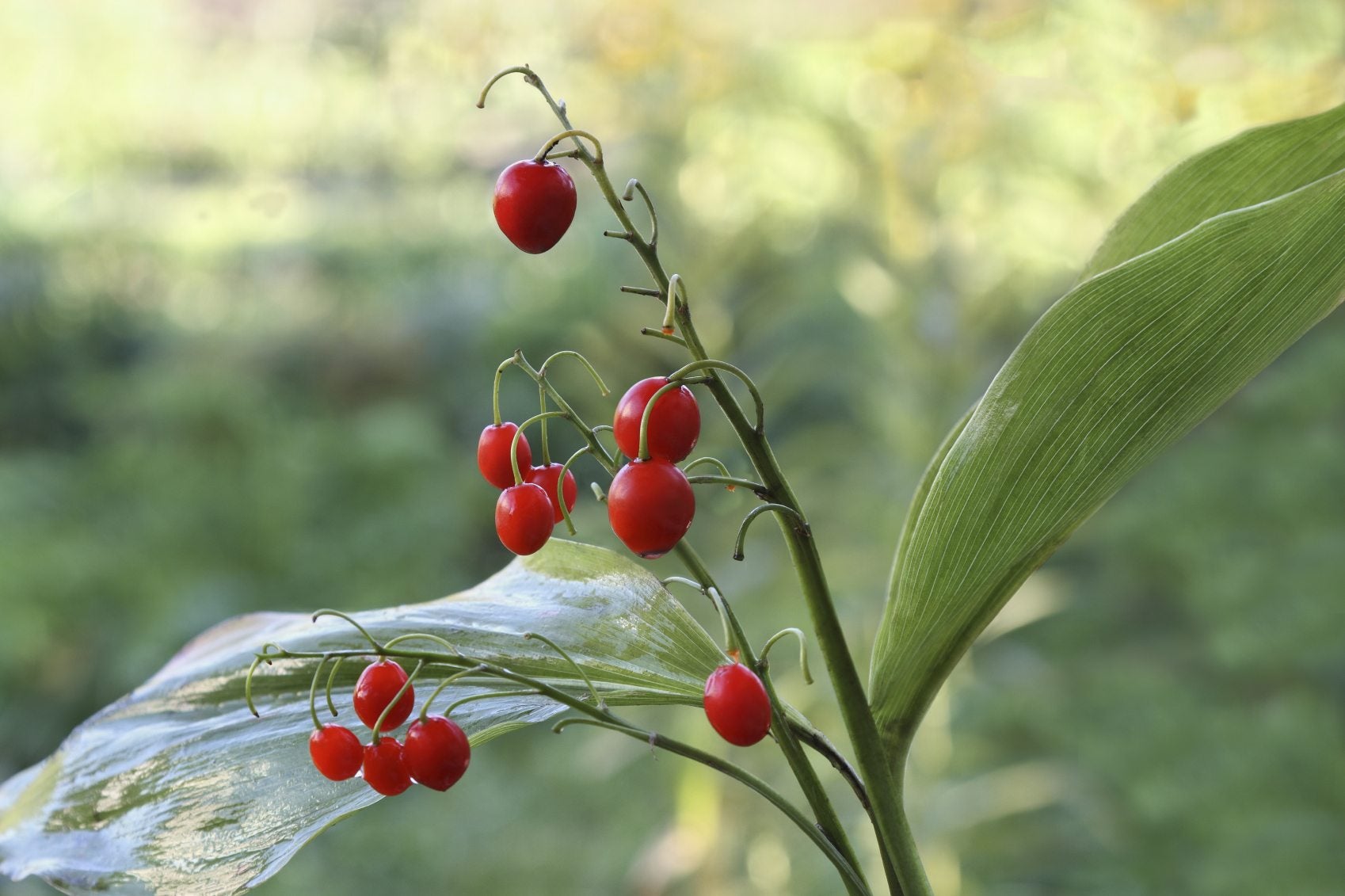Lily Of The Valley Seed Pod – Tips On Planting Lily Of The Valley Berries


Lily of the valley plants has an Old-World charm with their dainty, dangling blooms and arching foliage. The berries on lily of the valley and all other parts of the plant are poisonous if you eat them. They are pretty when they turn deep red and add interest among the dark green, strappy leaves. Can you plant lily of the valley berries though? Certainly, but the easiest and quickest way to start the plants is by division. Still want to try it? Let’s learn how to prepare the seed and when to plant lily of the valley berries for the best chance of success.
When are Berries on Lily of the Valley Ready?
If you wish to try starting lily of the valley plants from seed, you should be aware of one important fact: lily of the valley seed toxicity. These little lily of the valley seed pods are extremely dangerous to have around pets and children. Since they are so easy to just divide, planting lily of the valley berries is the slow way to go for more plants. Germination is capricious and the seeds must be used as soon as possible and should be ripe. Viable seed must come from ripe berries. The green berries will turn red and then gradually shrivel and turn rusty brown when they are ripe. Waiting for the seeds to ripen can be an exercise in futility because birds and other wild animals don't seem to mind their toxic reputation. To give them a chance to ripen, place small, mesh or fabric bags over the stems where the berries are. They will protect the berries from insects and animals and allow air and light to circulate through. Check the berries on your lily of the valley plant every week until you see them shriveled and darkened. Then it's time to harvest.
Separating Seed from Lily of the Valley Seed Pods
The dried berries can be hard to open without crushing the seed. Soak them in warm water for an hour to plump up the berries and then carefully excise away the flesh. Use gloves to prevent any of the poisonous flesh or juice from getting on your hands. There will be one to three seeds per pod. The seeds do not store well so planting lily of the valley berries quickly is important to success. Choose a lightly shaded area and work the soil at least 6 inches (15 cm.) deep. Incorporate generous amounts of leaf litter or compost to enhance drainage and fertility. Remove weeds and other debris and rake the bed smooth. Plant the seeds 1/4 inch (6 mm.) deep and firm the soil over them. Keep the area moderately moist. Keep a watch on the little plants for the next few years. Slugs, cutworms, and other insect pests will likely find the succulent new stems delicious. Don't expect flowers for several years.
Alternatives to Planting Lily of the Valley Berries
Now that you know how much work it can be, the question isn't, "can you plant lily of the valley berries" but "should you?" Dividing the pips or rhizomes is the fastest way to increase your stock of plants. Division should be done in the fall when the plants are dormant. Dig up a patch of lily of the valley and pull away the little offsets. Plant pips 2 inches (5 cm.) under the soil with the stem area up. Mulch over the area to protect the little plants. In late winter to early spring, pull away the mulch so new sprouts will have an easier time coming up. New plants will have flowers the following year. If you prefer the challenge of planting berries, it can be an interesting project. Due to the variability of seed germination, you can always fall back on division to increase your crop of these darling little white bell flowers.
Sign up for the Gardening Know How newsletter today and receive a free copy of our e-book "How to Grow Delicious Tomatoes".

Bonnie Grant is a professional landscaper with a Certification in Urban Gardening. She has been gardening and writing for 15 years. A former professional chef, she has a passion for edible landscaping.